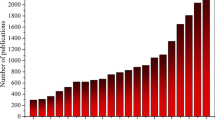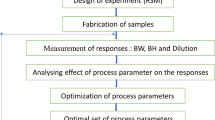Abstract
The present study is concerned with the mechanical properties of Cu-Al wires manufactured via cold drawing. The common approach for improving the tensile strength of drawn wires is to optimize the operational parameters. Those parameters include the die geometry, amount of area reduction at each pass, drawing speed, lubrication and so on. Optimization helps homogenize the plastic deformation during wire drawing. That in turn minimizes the undesirable effect of processing-induced tensile residual stresses forming near the wire surface. The current investigation introduces a novel optimization approach to modify the residual stress distribution with a focus on the fiber-matrix configuration rather than the operational parameters. To that end, residual stress distributions in the two configurations I- conventional copper-clad aluminum and II- so-called “Architectured” wires were compared at the same Cu/Al volume fraction. The comparison was performed using the finite element analysis. Experimental stress–strain curves, numerical residual stress profiles, and equivalent plastic strain contours were then plotted for both conventional and novel configurations. The findings suggest that the novel composite wires offer remarkably better tensile behavior along with other already-known electrical and thermal advantages. This could be ascribed to their architectural features such a continuous copper network and fine Al fibers. Therefore, the new fiber-matrix configuration could remove the need for optimization of various operational parameters or post-drawing treatments for a given wiredrawing set-up.










Similar content being viewed by others
References
Newbury BD, Notis MR (2004) The history and evolution of wiredrawing techniques. JOM 56:33–37. https://doi.org/10.1007/s11837-004-0142-2
McMeeking RM, Lee EH (1982) The generation of residual stresses in metal-forming processes. In: Residual Stress and Stress Relaxation. Springer, pp 315–329
Ruiz-Hervias J, Hofmann M, Rebelo-Kornmeier J et al (2009) Residual stresses in cold-drawn rods: Effect of a novel post-drawing treatment. Adv X-Ray Anal 52:747–754
Rasty J (1987) Experimental and finite element study of residual stresses in Zircaloy-4 (R) and OFHC copper tubes. PhD Thesis, Louisiana State University and Agricultural & Mechanical College
Baumann M, Graf A, Selbmann R et al (2018) Influence of a modified drawing process on the resulting residual stress state of cold drawn wire. In: MATEC web of Conferences. EDP Sciences, p 04004
Kim J-H, Baek C-H, Lee S-K et al (2021) Effect of a multiple reduction die on the residual stress of drawn materials. Materials 14:1358
Atienza JM, Elices M, Ruiz-Hervias J et al (2007) Residual stresses and durability in cold drawn eutectoid steel wires. Met Mater Int 13:139–143
Zottis J, Diehl CATS, da Silva RA (2018) Evaluation of experimentally observed asymmetric distributions of hardness, strain and residual stress in cold drawn bars by FEM-simulation. J Mater Res Technol 7:469–478
Atienza JM, Elices M (2007) Role of residual stresses in stress relaxation of prestressed concrete wires. J Mater Civ Eng 19:703–708
Ripoll MR, Weygand SM, Riedel H (2010) Reduction of tensile residual stresses during the drawing process of tungsten wires. Mater Sci Eng A 527:3064–3072
Martinez GAS, dos Santos EF, Kabayama LK et al (2019) Influences of different die bearing geometries on the wire-drawing process. Metals 9:1089
Dixit US, Dixit PM (1995) An analysis of the steady-state wire drawing of strain-hardening materials. J Mater Process Technol 47:201–229
Banda F (2018) Effects of die design, manufacturing and process parameters on chevron and surface cracking of copper wire during wire drawing. Thesis, The University of Zambia
Dmitriy D (2019) Analysis of residual stress in circular cross-section wires after drawing process. Procedia Manuf 37:335–340
Rodríguez-Alabanda Ó, Romero PE, Molero E, Guerrero-Vaca G (2019) Analysis, validation and optimization of the multi-stage sequential wiredrawing process of EN AW-1370 aluminium. Metals 9:1021
Hassan AKF, Hashim AS (2015) Three dimensional finite element analysis of wire drawing process. Univers J Mech Eng 3:71–82
Marr T, Freudenberger J, Seifert D et al (2011) Ti-Al composite wires with high specific strength. Metals 1:79–97
Kunčická L, Kocich R, Strunz P, Macháčková A (2018) Texture and residual stress within rotary swaged Cu/Al clad composites. Mater Lett 230:88–91
Kocich R, Kunčická L, Král P, Strunz P (2018) Characterization of innovative rotary swaged Cu-Al clad composite wire conductors. Mater Des 160:828–835
Kunčická L, Kocich R (2018) Deformation behaviour of Cu-Al clad composites produced by rotary swaging. In: IOP Conference Series: Materials Science and Engineering. IOP Publishing, p 012029
Lechner S, Røemisch U, Nitschke R et al (2021) Optimization of the indirect extrusion process of copper-clad aluminum rods by methods of statistical experimental designs and numerical analyses. Front Mater 8:148
Srinivasan R (1984) Study of the hydrostatic co-extrusion of aluminum and copper (computer simulation, residual stress).
Bullough R, Hartley CS (1994) Residual stresses in codeformed composite cylinders. J Mater Process Technol 45:281–286
Lei X-L, Lin Z-C, Sun F-H et al (2012) Optimization of drawing parameters for copper clad aluminum wires based on FEM simulation. Mach Des Res 03
Dashti A, Keller C, Vieille B et al (2021) Experimental and finite element analysis of the tensile behavior of architectured Cu-Al composite wires. Materials 14:6305
Keller C, Moisy F, Nguyen N et al (2021) Microstructure and mechanical properties characterization of architectured copper aluminum composites manufactured by cold-drawing. Mater Charact 172:110824
Lee J, Jeong H (2021) Effects of cladding configuration and volume fraction of Cu on thermal diffusivity in mono and bundled Al/Cu clads fabricated through a rod drawing process. Mater Lett 282:128885
Moisy F, Gueydan A, Sauvage X et al (2018) Influence of intermetallic compounds on the electrical resistivity of architectured copper clad aluminum composites elaborated by a restacking drawing method. Mater Des 155:366–374
Chinh NQ, Horváth G, Horita Z, Langdon TG (2004) A new constitutive relationship for the homogeneous deformation of metals over a wide range of strain. Acta Mater 52:3555–3563
(1951) Friction in: WIRE DRAWING. Ind Lubr Tribol 3:26–26. https://doi.org/10.1108/eb052102
Xiaotao G, Fan Y (2012) Research of PEEQ for conical ring with outer steps ring rolling. Phys Procedia 25:257–261
Ebert LJ, Hecker SS, Hamilton CH (1968) The stress-strain behavior of concentric composite cylinders. J Compos Mater 2:458–476. https://doi.org/10.1177/002199836800200406
Khoddam S, Tian L, Sapanathan T et al (2018) Latest developments in modeling and characterization of joining metal based hybrid materials. Adv Eng Mater 20:1800048
Tacq J (2015) Residual and internal stress development resulting from plastic deformation of multi-phase alloys: the case of pearlite
Biselli C, Morris DG (1996) Microstructure and strength of Cu-Fe in Situ composites after very high drawing strains. Acta Mater 44:493–504
Atienza JM, Elices M (2003) Influence of residual stresses in the tensile test of cold drawn wires. Mater Struct 36:548–552
Funding
The authors gratefully acknowledge the funding from The Region of Normandy.
Author information
Authors and Affiliations
Corresponding author
Ethics declarations
Conflict of interest
The authors declare that they have no conflict of interest.
Additional information
Publisher's note
Springer Nature remains neutral with regard to jurisdictional claims in published maps and institutional affiliations.
Rights and permissions
About this article
Cite this article
Dashti, A., Keller, C., Vieille, B. et al. Novel approach to optimize the mechanical properties of Cu-Al composite wires. Int J Mater Form 15, 46 (2022). https://doi.org/10.1007/s12289-022-01697-1
Received:
Accepted:
Published:
DOI: https://doi.org/10.1007/s12289-022-01697-1




